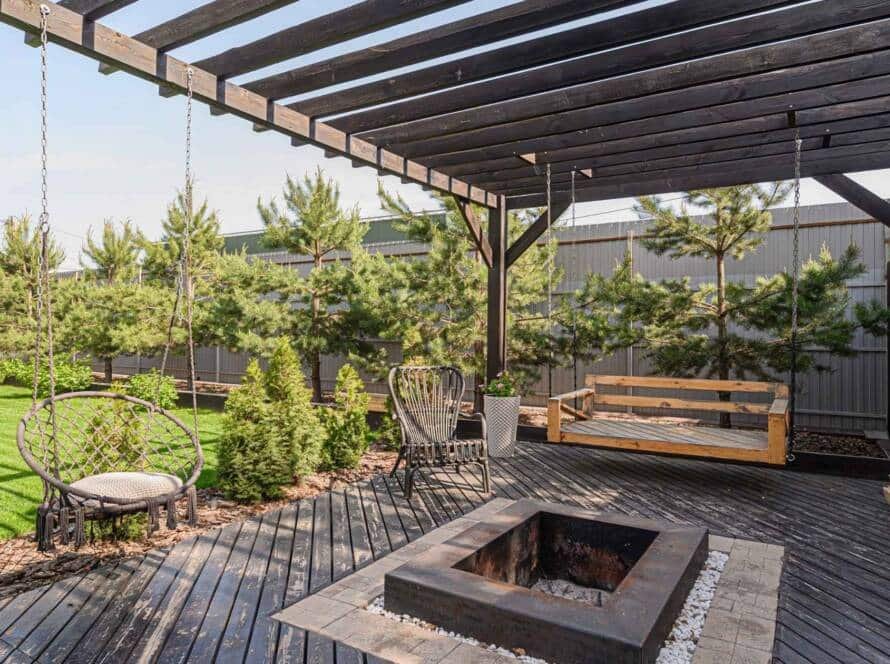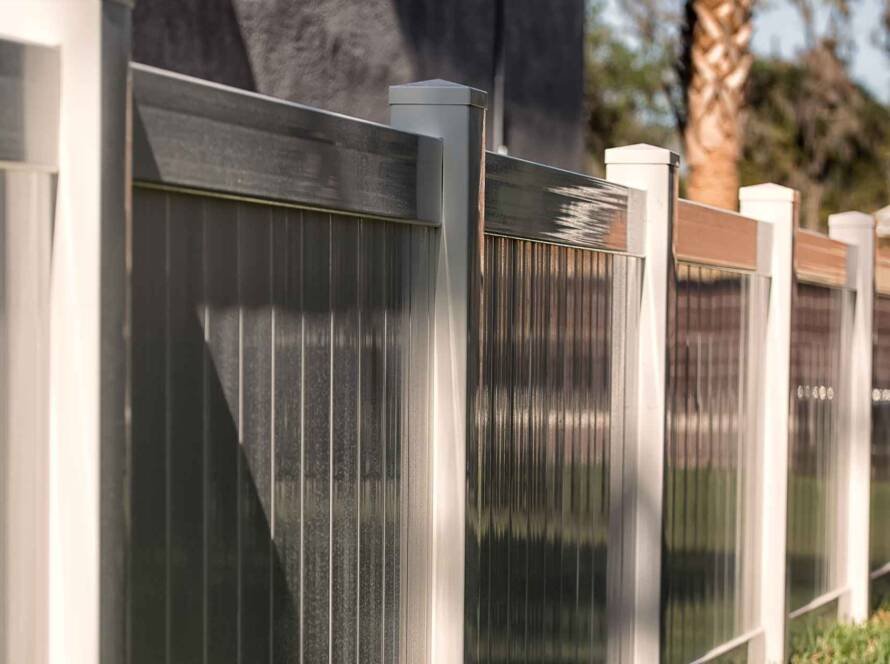Introduction: Is Painting Vinyl Cladding the Right Choice for Your Home?
Is your home’s vinyl cladding looking a little worn out, or are you simply looking for a fresh new look? You’re not alone. Many homeowners are asking, “Can you paint vinyl cladding?” The answer is yes—and it’s often a more affordable and simpler option than replacing your entire exterior.
Painting your vinyl siding can dramatically update your home’s appearance, without the hefty cost of a full replacement. In this article, we’ll cover why painting vinyl cladding is a fantastic solution for homeowners in Dallas, the preparation steps you must take, the best paints for vinyl siding, and whether painting or replacing your cladding is the better choice. Plus, we’ll explore when it’s best to hire the experts—like the team at America’s General Contracting, specialists in home remodeling and vinyl cladding services in Dallas.
Table of Contents
1. What is Vinyl Cladding? An Overview of Vinyl Siding
Before diving into the details of painting, it’s important to understand what vinyl cladding is. Vinyl cladding (or vinyl siding) is an exterior covering for homes made primarily from Polyvinyl Chloride (PVC). This plastic material is known for its durability and low-maintenance properties.
Why Choose Vinyl Cladding for Your Home?
- Low Maintenance: Unlike wood or metal, vinyl doesn’t require regular scraping, painting, or staining.
- Durability: Vinyl can withstand extreme weather conditions, such as rain, snow, and high winds, making it ideal for Dallas’s varied climate.
- Cost-Effectiveness: Vinyl is often less expensive than other cladding materials, both in terms of material and installation costs.
- Versatility: It’s available in a variety of colors, textures, and styles to complement your home’s exterior design.
Vinyl siding has surged in popularity over the past few decades due to its longevity and ability to maintain its aesthetic appeal despite harsh weather conditions. In fact, the National Association of Home Builders reports that vinyl siding is one of the most commonly used exterior materials for homes across the U.S.
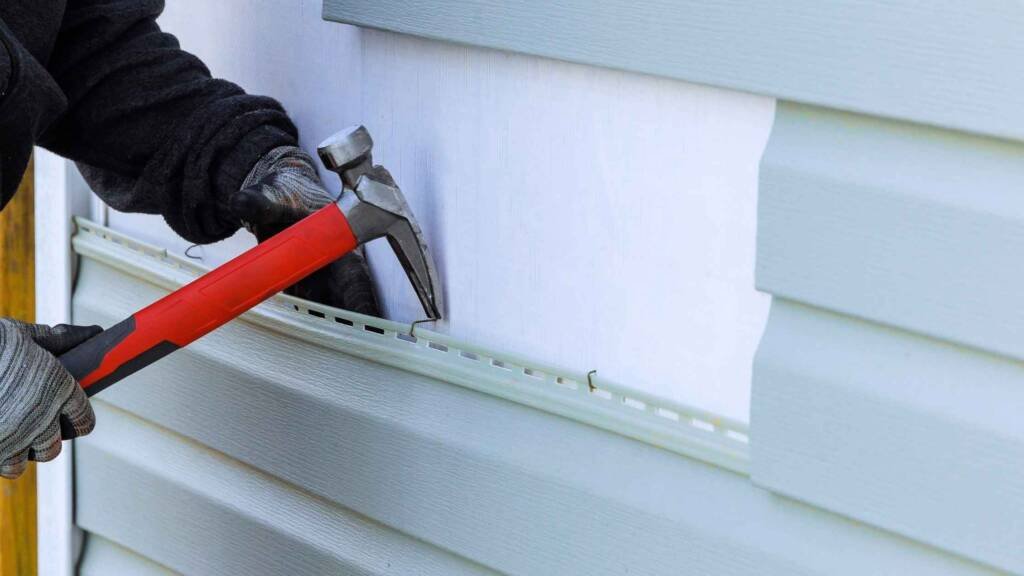
2. Can You Paint Vinyl Cladding? Understanding the Basics
Yes, you can paint vinyl cladding! However, it’s important to note that proper preparation is key to ensuring that the paint adheres well and lasts for years.
Unlike porous surfaces like wood or brick, vinyl cladding is smooth and non-porous, which means it requires specific steps to ensure that paint stays in place.
Key Considerations Before Painting:
- Surface Preparation: Vinyl’s smooth surface can make it difficult for paint to adhere. Cleaning, sanding, and priming are essential to ensure a lasting finish.
- Material Compatibility: Use only paints designed for vinyl or plastic surfaces. Oil-based paints can cause warping or cracking.
- Color Choices: Choose a color that works with the natural expansion and contraction of the vinyl. Dark colors are particularly risky because they can trap heat, causing the vinyl to warp.
Many people believe that vinyl cladding can’t be painted, or that the paint will simply peel away. However, with the right preparation and materials, vinyl siding can hold paint for many years—allowing you to refresh your home without the cost of replacing the cladding entirely.
Should You Replace Vinyl Instead of Painting?
While painting is an excellent option for refreshing your home’s exterior, it may not always be the best choice. Here’s how to decide between painting and replacing your vinyl siding:
- Cost: Painting is significantly cheaper than replacing your entire vinyl cladding.
- Condition of the Vinyl: If your vinyl siding is severely damaged, replacement might be a better option in the long term. Otherwise, painting is a great alternative to restore the appearance and extend the lifespan of your siding.
3. Preparing Vinyl Cladding for Painting: Essential Steps
Proper preparation is critical to ensuring your paint job lasts. Without the right preparation, the paint will likely peel or fade prematurely.
Essential Preparation Steps:
- Clean the Surface: The first step in preparing vinyl cladding for painting is thoroughly cleaning it. Dirt, mold, and mildew must be removed, either by using a pressure washer or a strong hose. This step ensures that the paint adheres properly.
- Repair Damage: Check your vinyl siding for cracks or holes. Repair any damage before painting to avoid an uneven surface.
- Sanding and Priming: Lightly sand the surface to help the primer adhere. After sanding, apply a high-quality primer specifically made for PVC surfaces.
- Gather the Right Tools: Make sure you have everything you need: a pressure washer, sandpaper, primer, paint sprayer or brush, and drop cloths.
Quick Preparation Checklist:
- Thoroughly clean the vinyl surface.
- Repair cracks or holes.
- Lightly sand the surface.
- Apply a vinyl-specific primer.
- Ensure you have all necessary tools.
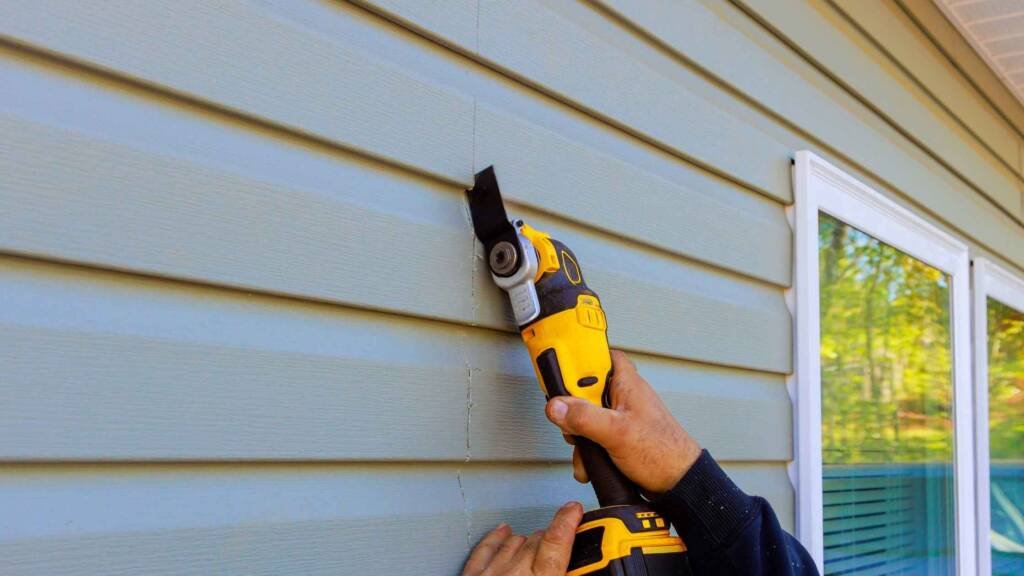
4. Choosing the Right Paint for Vinyl Cladding
Selecting the right paint is essential for a successful and durable paint job. Not all paints work well on vinyl cladding, so it’s important to choose one that’s designed to handle the material.
Best Paints for Vinyl Cladding:
- Latex-based Paints: These are the best for vinyl siding because they expand and contract along with the vinyl, helping the paint stay intact.
- Vinyl-Specific Paints: Some brands offer paints specifically formulated for vinyl surfaces. These paints offer superior adhesion and flexibility.
- Color Considerations: Lighter shades are recommended for vinyl because they don’t absorb as much heat. Darker colors may cause the vinyl to warp due to heat retention.
Top Paint Brands for Vinyl Siding:
- Sherwin-Williams Duration: Known for its durability, this paint is designed to accommodate the expansion and contraction of vinyl.
- Behr Premium Plus Ultra: A great all-in-one option with both paint and primer formulated for vinyl surfaces.
- Benjamin Moore Aura: A premium paint choice that’s ideal for vinyl, offering long-lasting coverage.
5. Step-by-Step Guide to Painting Vinyl Cladding
Once you’ve prepared your vinyl siding and chosen the right paint, it’s time to start the painting process. Follow these simple steps for the best results.
Step-by-Step Painting Process:
- Clean the Surface: Remove all dirt, mold, and mildew using a pressure washer or hose.
- Sanding: Lightly sand the surface if necessary to help the primer adhere.
- Prime the Surface: Apply a thin coat of vinyl-specific primer.
- Apply Thin Coats of Paint: Use multiple thin coats of paint rather than one thick layer to ensure an even finish.
- Allow Time to Cure: Let the paint dry completely before exposing it to harsh weather.
6. How Long Does Painted Vinyl Cladding Last? Maintenance Tips
A quality paint job on vinyl cladding can last anywhere from 5 to 10 years, depending on several factors. Proper maintenance is crucial to preserving the appearance and longevity of your paint job.
Factors Affecting Paint Longevity:
- Sunlight: Homes facing direct sunlight may see the paint fade faster, so consider your home’s orientation.
- Weather Conditions: Frequent rain, snow, or wind can degrade the paint over time.
- Maintenance: Regular cleaning and touch-ups can extend the life of your painted vinyl.
Maintenance Tips:
- Clean your siding at least once a year.
- Check for any peeling or cracking and address it quickly.
- Perform touch-ups as needed to maintain a fresh look.
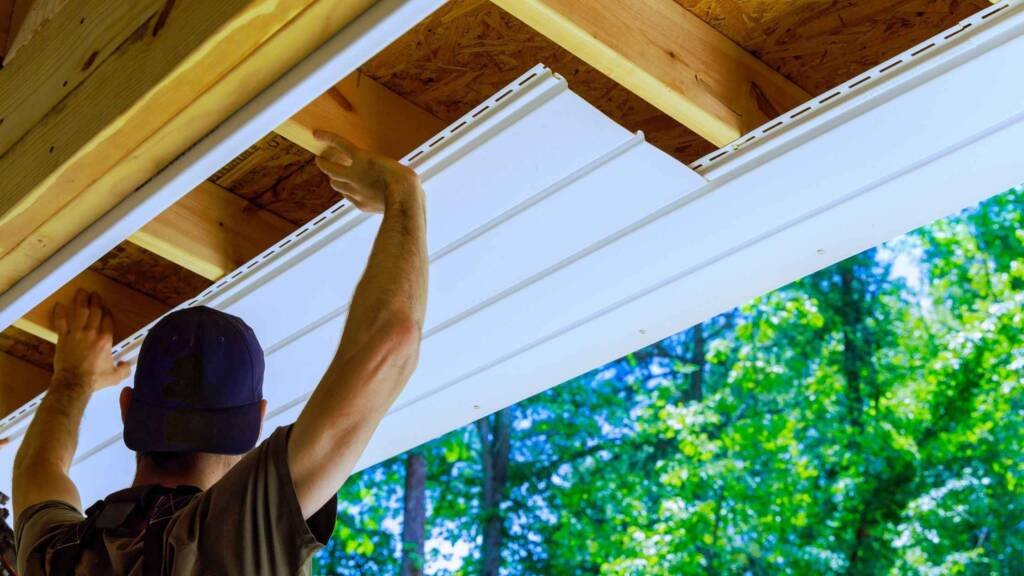
7. Pros and Cons of Painting Vinyl Cladding
Before you commit to painting your vinyl siding, it’s important to weigh the pros and cons.
Pros of Painting Vinyl Cladding:
- Cost-Effective: Painting is far more affordable than replacing your vinyl siding.
- Improves Curb Appeal: A fresh coat of paint can make your home look brand new.
- Adds Protection: The right paint provides an extra layer of protection against the elements.
Cons of Painting Vinyl Cladding:
- Maintenance Required: Painted vinyl siding requires periodic touch-ups and reapplication.
- Limited Color Options: Dark colors may cause heat retention, leading to potential warping.
- Not as Durable as Replacement: Over time, the paint may begin to peel or fade, necessitating maintenance.
8. When to Call a Professional for Vinyl Cladding Painting
While painting vinyl cladding is a manageable DIY project, there are times when hiring a professional is the best option.
When to Call a Professional:
- Hard-to-Reach Areas: Large homes or multi-story structures can make DIY painting difficult.
- Poor Condition of Vinyl: If the vinyl is damaged, painting may not restore its appearance, and replacement might be a better solution.
- Quality Assurance: Professionals ensure the job is done properly with the right materials and techniques.
At America’s General Contracting, we specialize in professional vinyl cladding painting services in Dallas. Our experienced team will ensure a flawless finish that lasts.
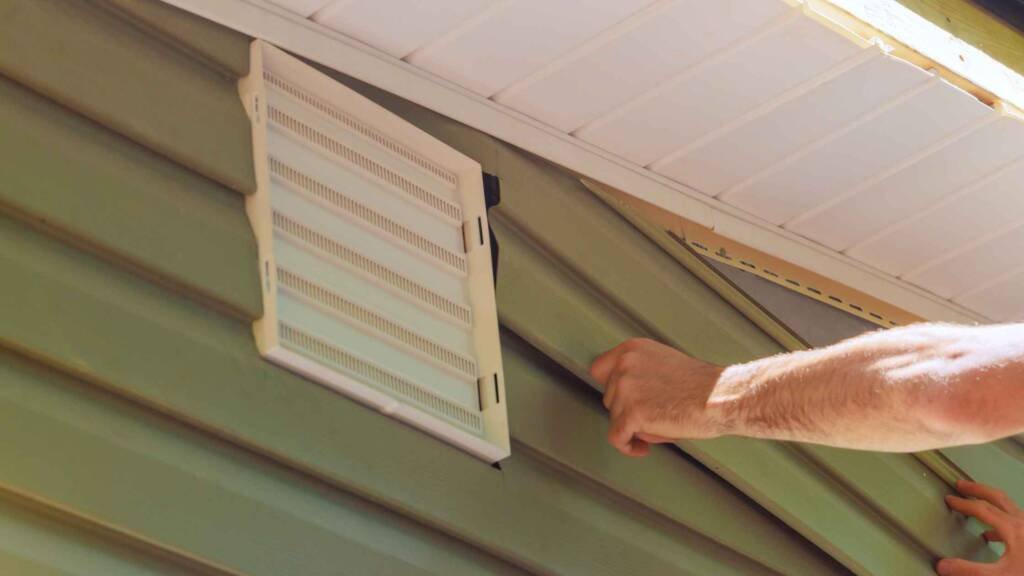
9. Frequently Asked Questions (FAQs) about Painting Vinyl Cladding
Can I paint over old paint on vinyl siding?
Yes, but be sure to clean and lightly sand the surface before applying a new coat of primer and paint.
What’s the best time of year to paint vinyl cladding?
Late spring or early summer is ideal, as moderate temperatures (between 50°F and 85°F) promote optimal paint adhesion.
How much does it cost to paint vinyl cladding?
The cost can range from $2,000 to $4,000, depending on the size of your home and the materials used.
Does painting vinyl cladding affect its warranty?
Typically, painting does not void the warranty, but it’s always a good idea to check with the manufacturer.
Conclusion: Make Your Vinyl Cladding Look Like New Again
Painting vinyl cladding is an affordable and effective way to improve the look of your home’s exterior. With proper preparation and the right materials, you can refresh your siding and protect it for years to come. If you’re ready to give your vinyl cladding a makeover, or if you’d prefer to leave it to the experts, America’s General Contracting is here to help with all your vinyl cladding painting and home remodeling needs.
Final Call-to-Action:
Don’t let your vinyl cladding hold back the beauty of your home. Contact us today for a consultation, and let us help you bring your exterior to life!


